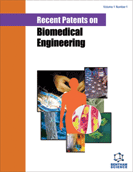Abstract
In comparison to two-dimensional (2D), three-dimensional (3D) cell culture systems are believed to more closely emulate in vivo conditions, and thus are becoming popular models for screening in drug discovery and other studies related to human diseases. The rising importance of 3D cell cultures is reflected in the four-fold increase of related publications between 1996 and 2006. This paper reviews US patents issued that underpin the practical utilization of 3D cell culture systems. Patents are grouped according to the materials used including synthetic and natural polymer, inorganic/nonmetallic materials, and specialized medium. While earlier applications of 3D cell culture systems relied heavily on their ability to prolong cell growth and promote cell propagation, recent applications mainly focus on in vivo emulation attributes. In all cases the 3D claims are based on morphology, which may not be sufficient. Genomic and cellular functional assays to substantiate these claims are needed.
Keywords: HTS, drug discovery, three-dimensional, cell culture, patents
 3
3

